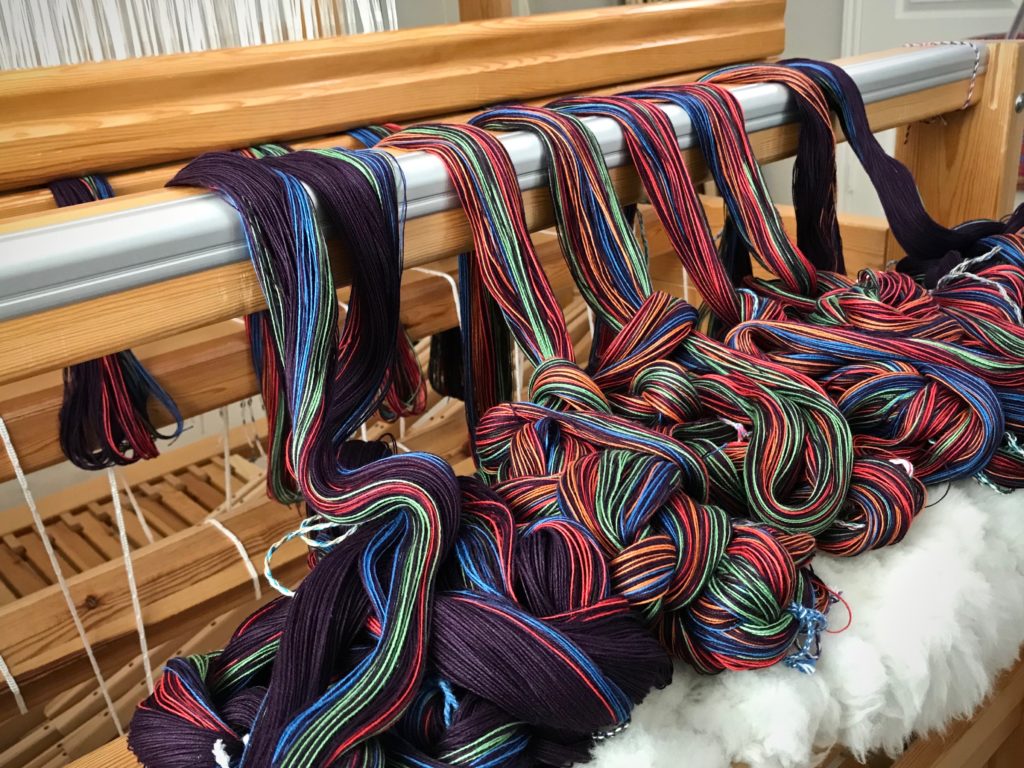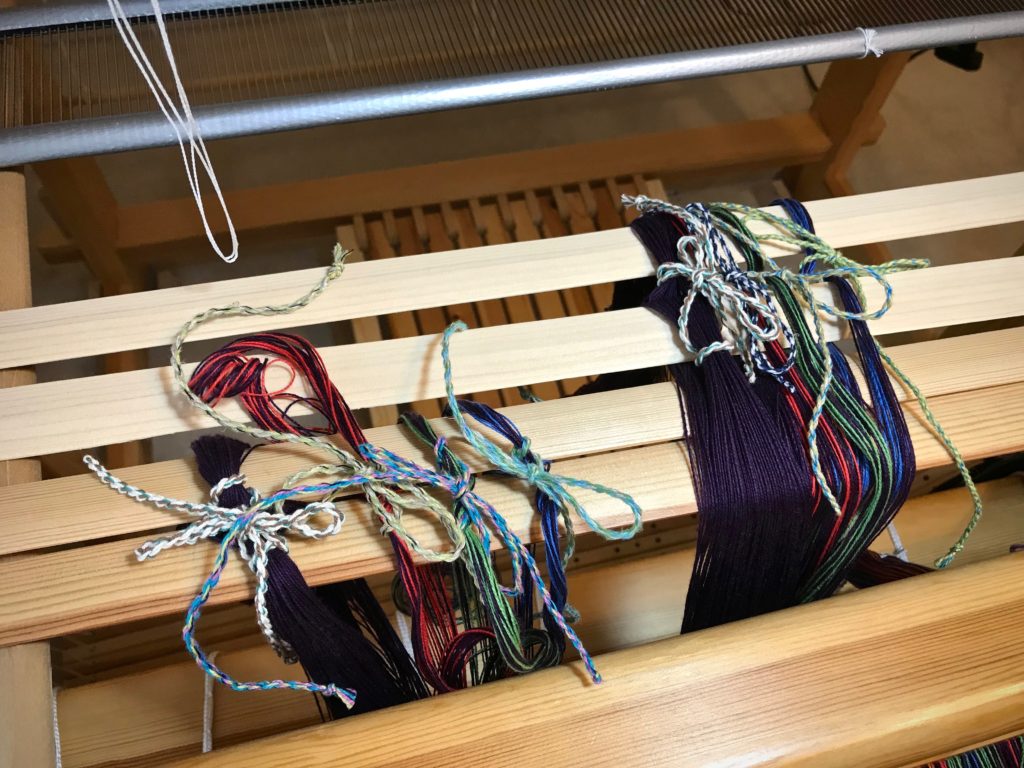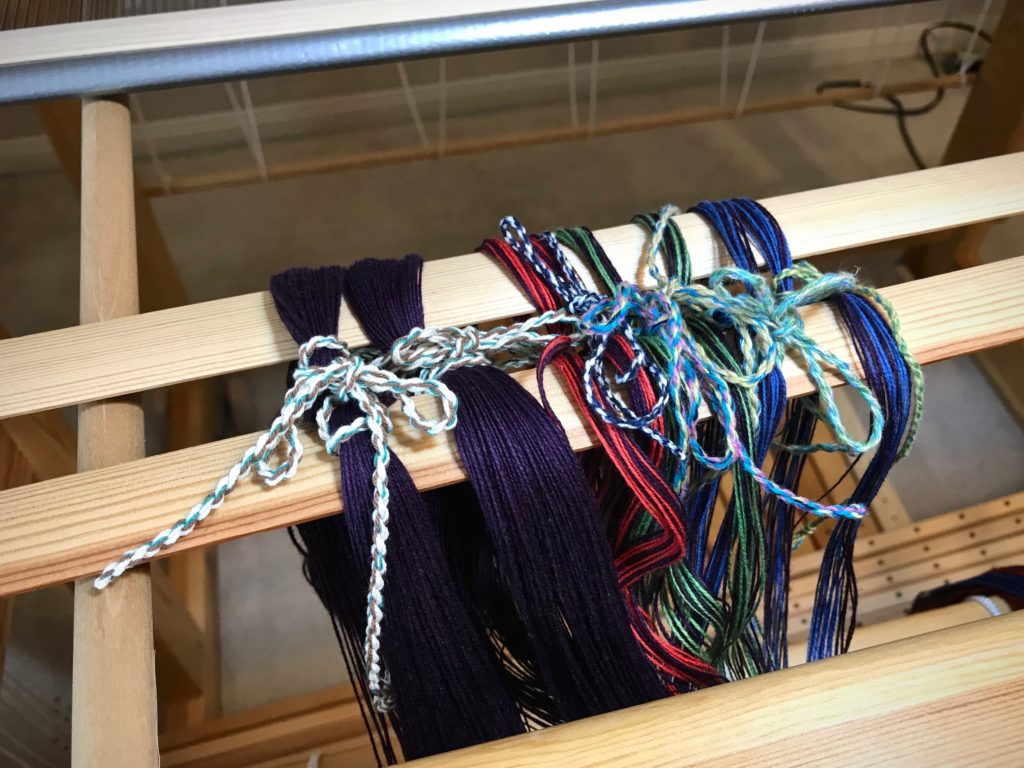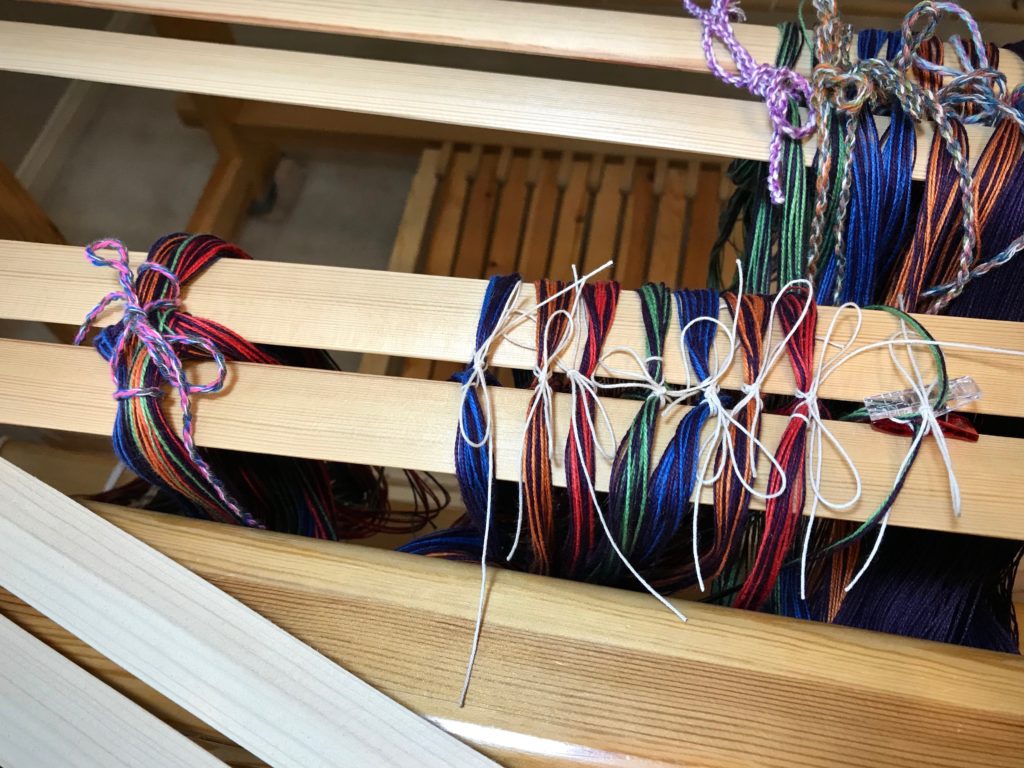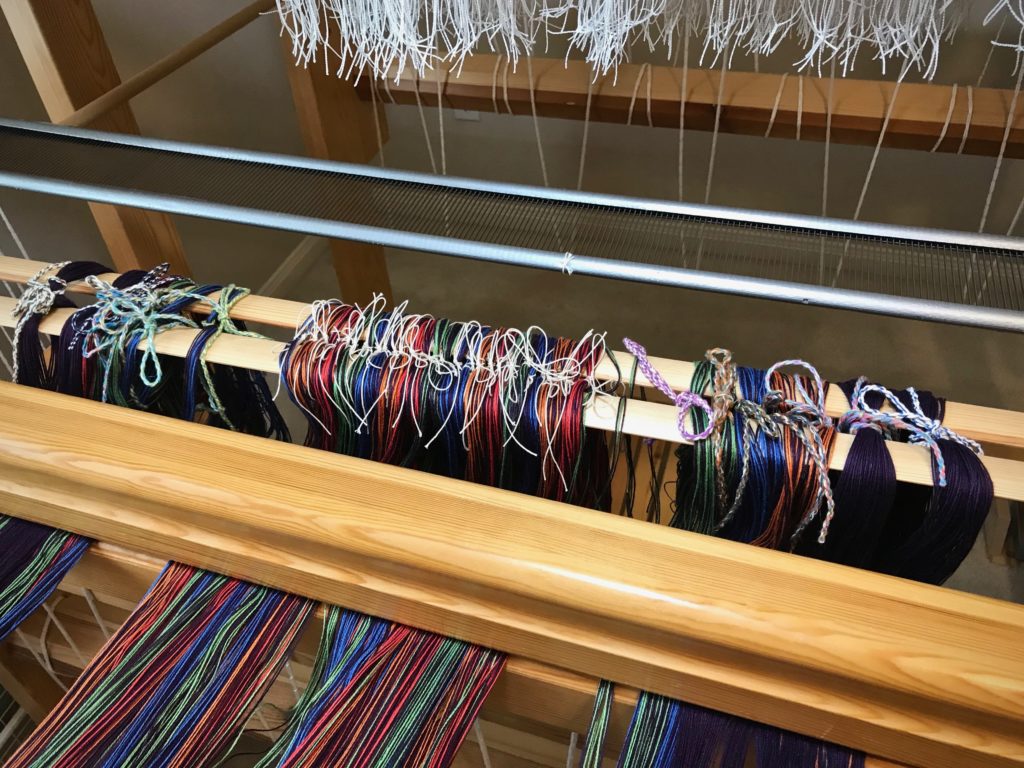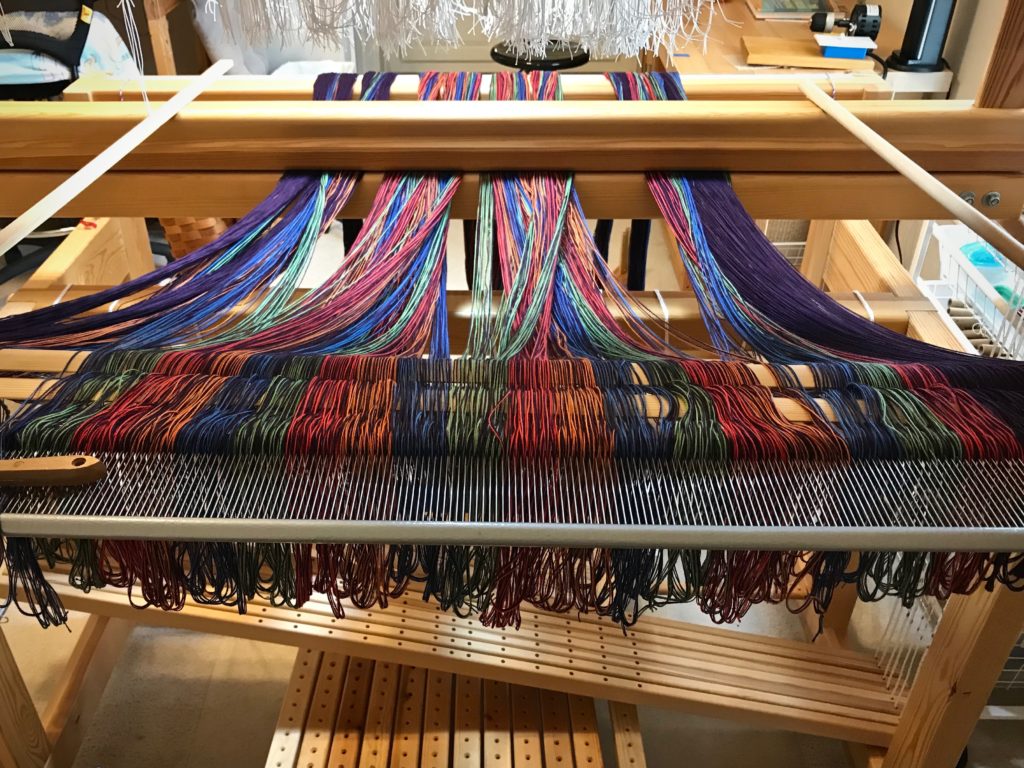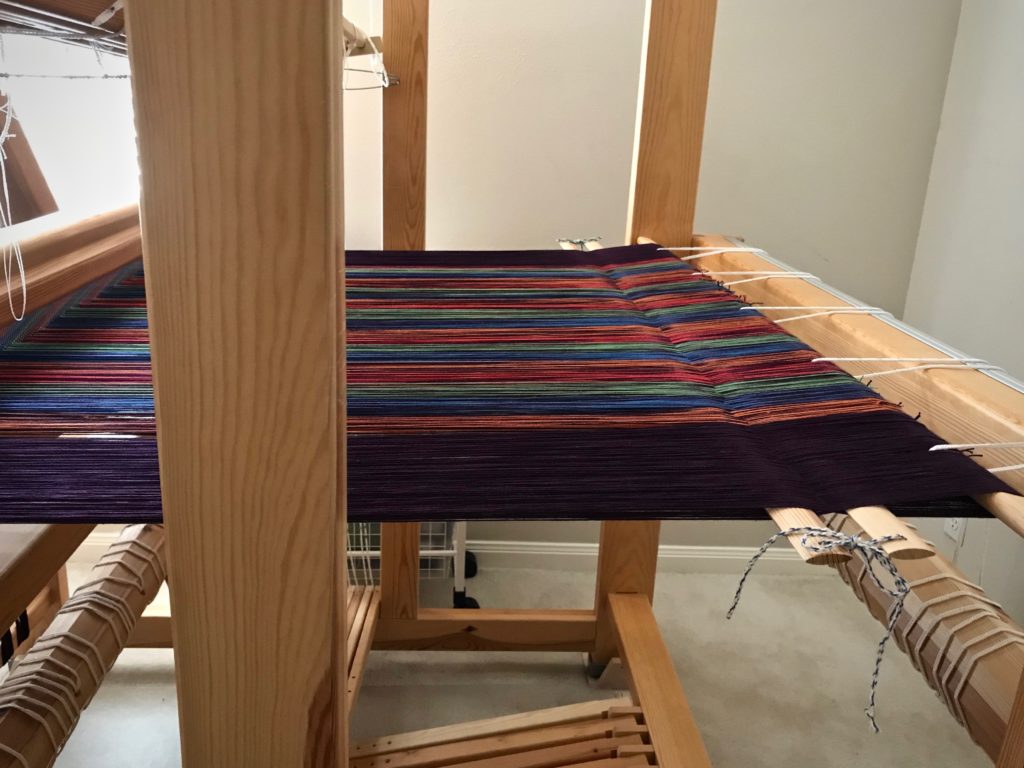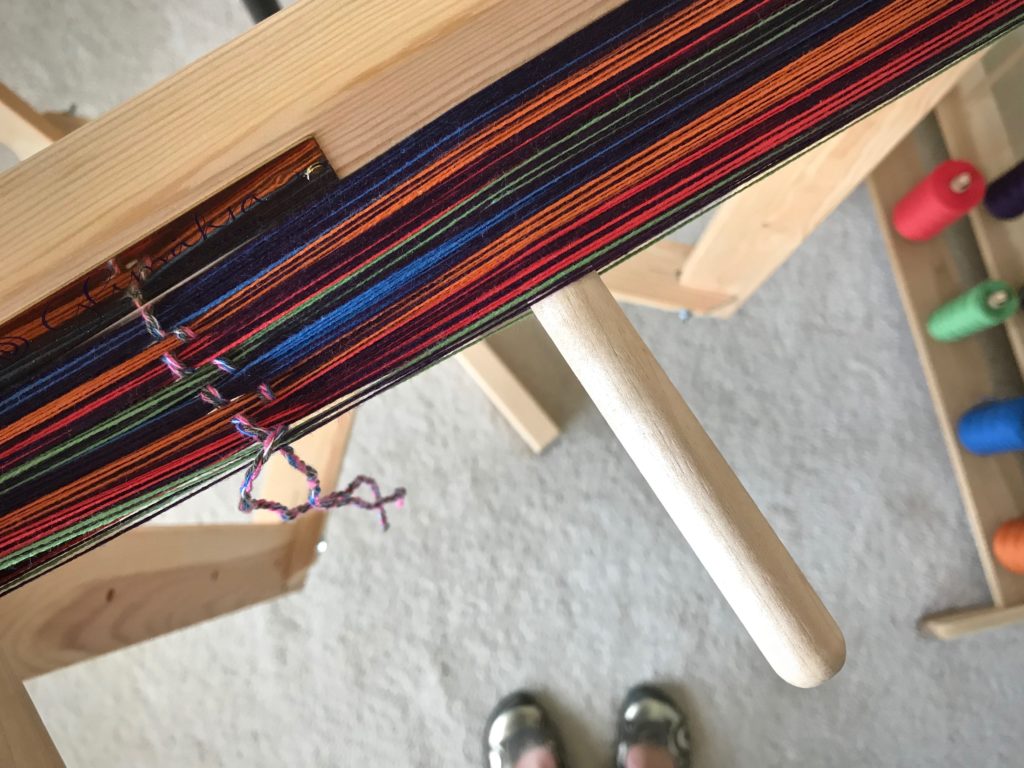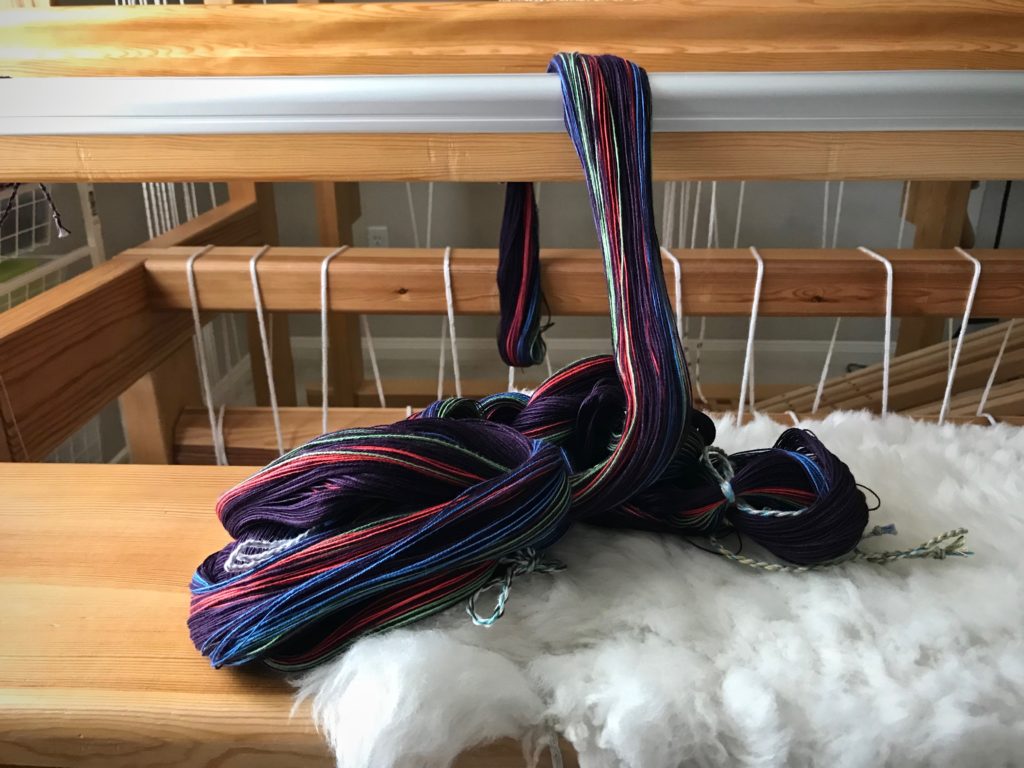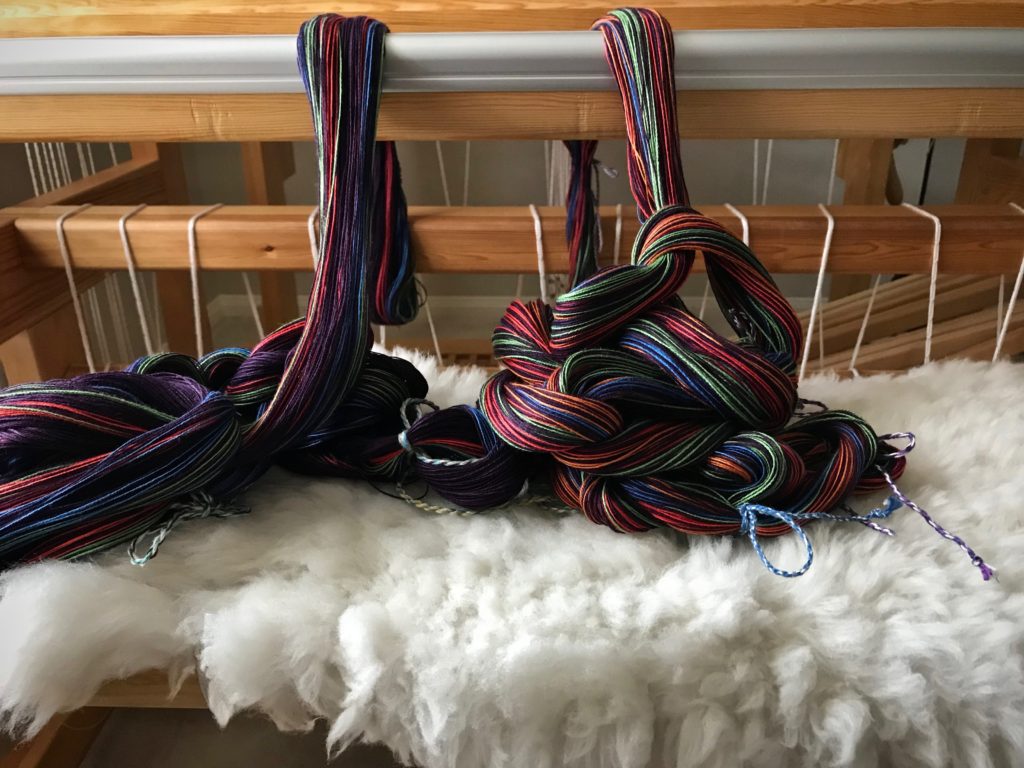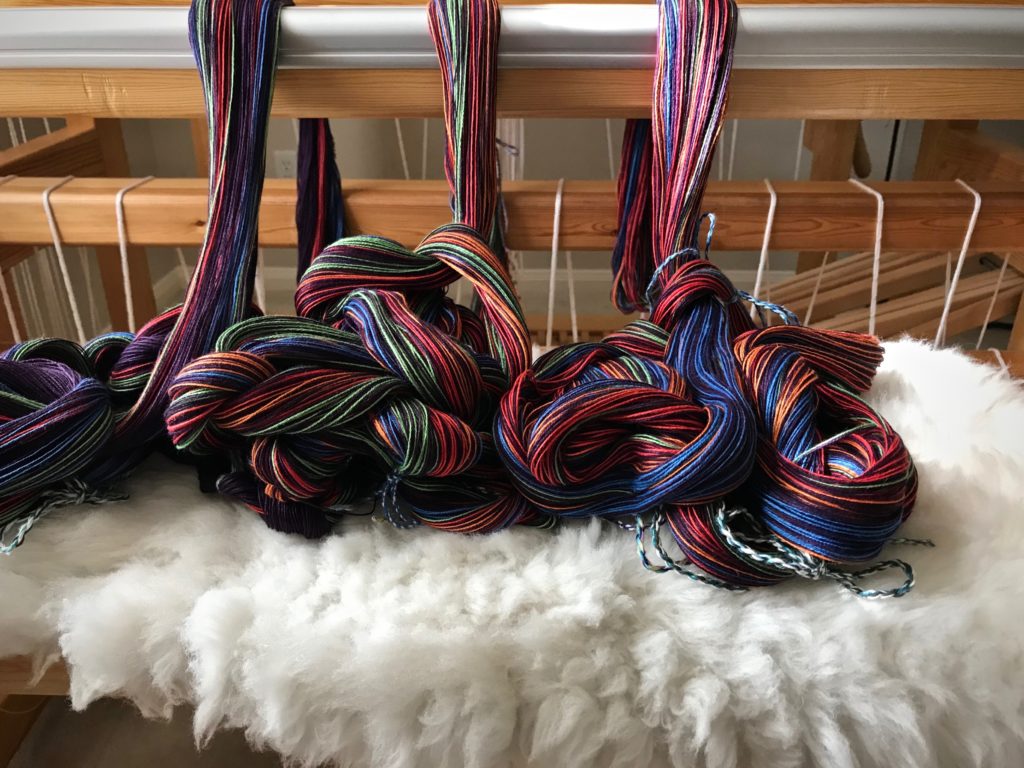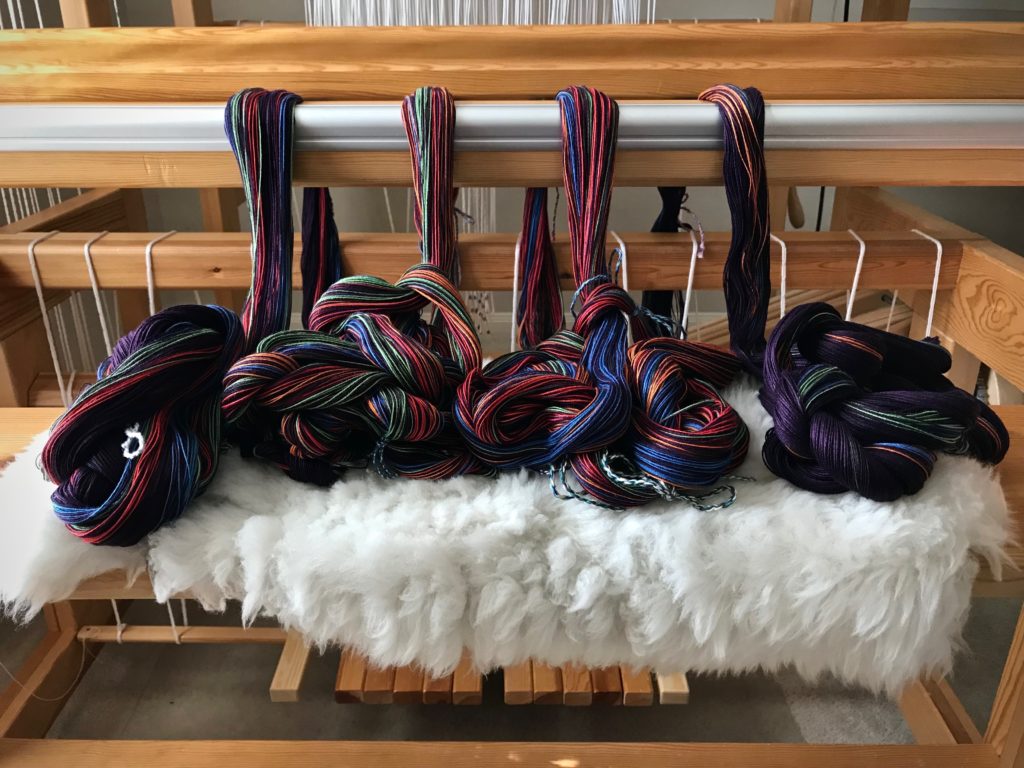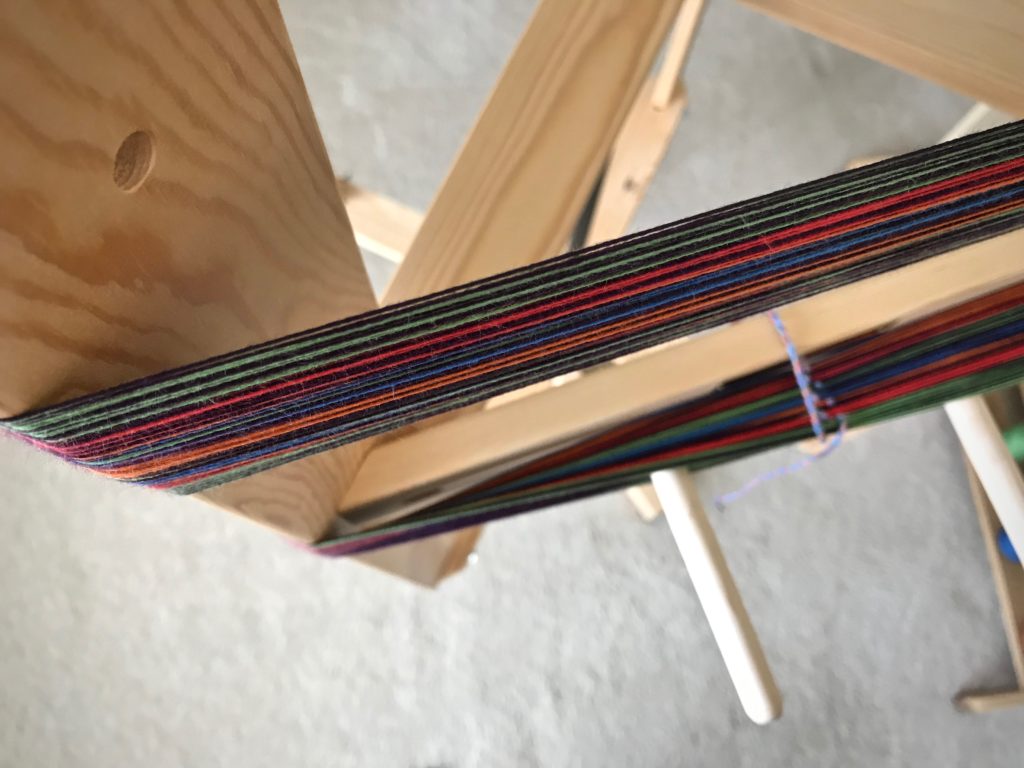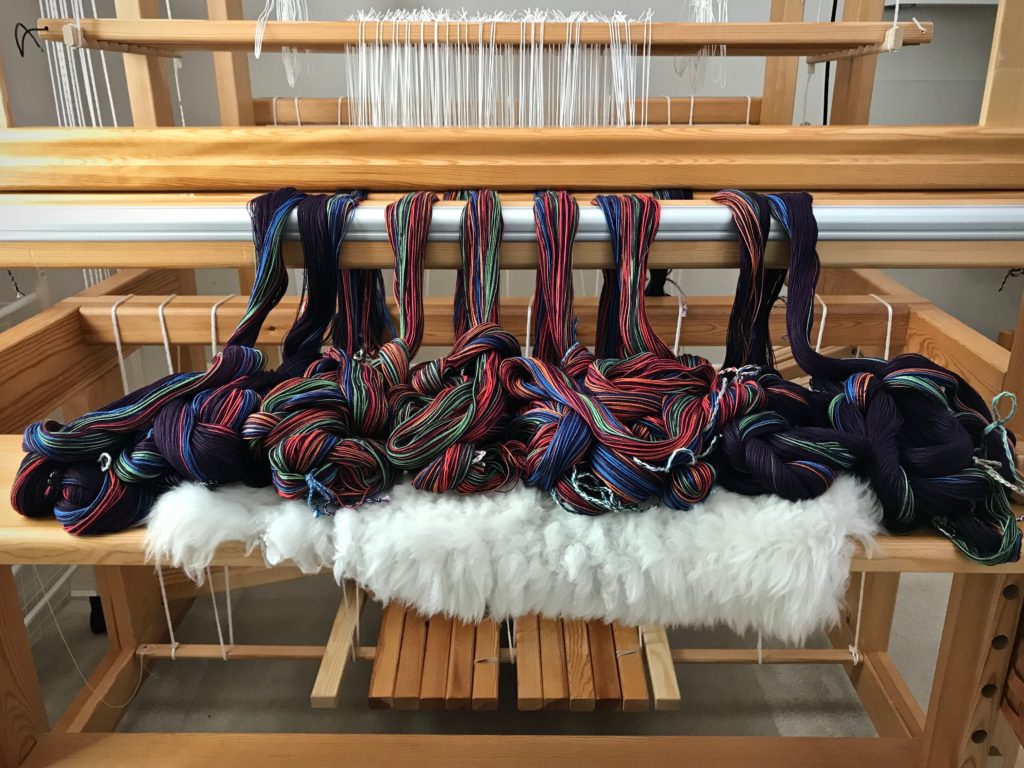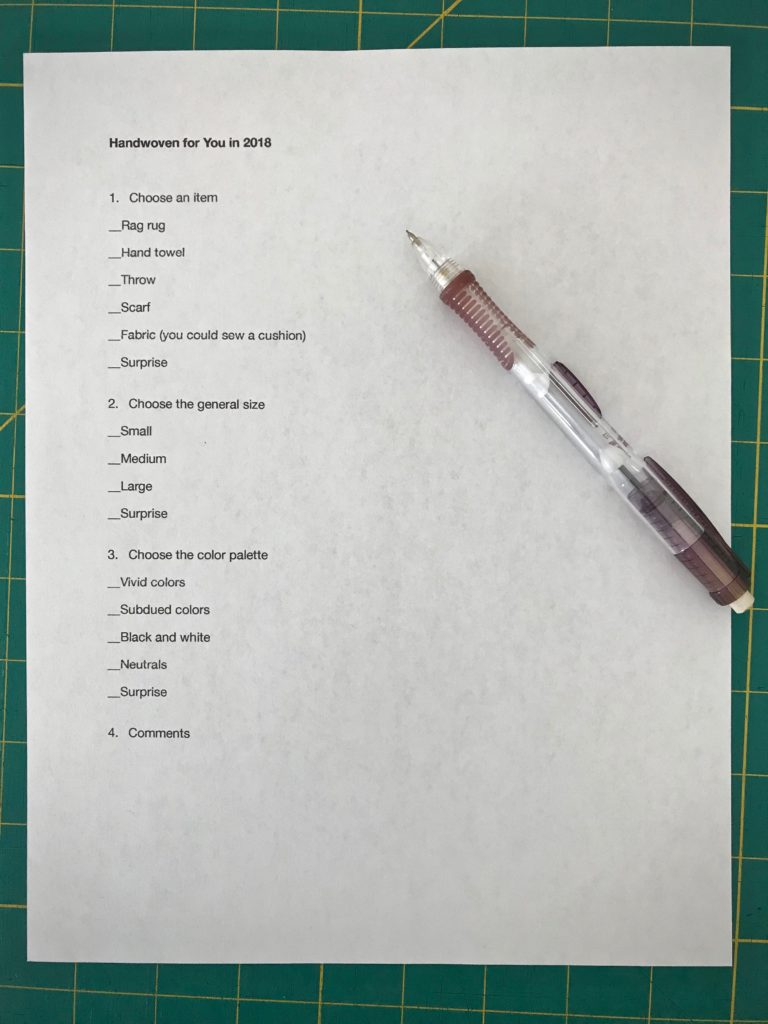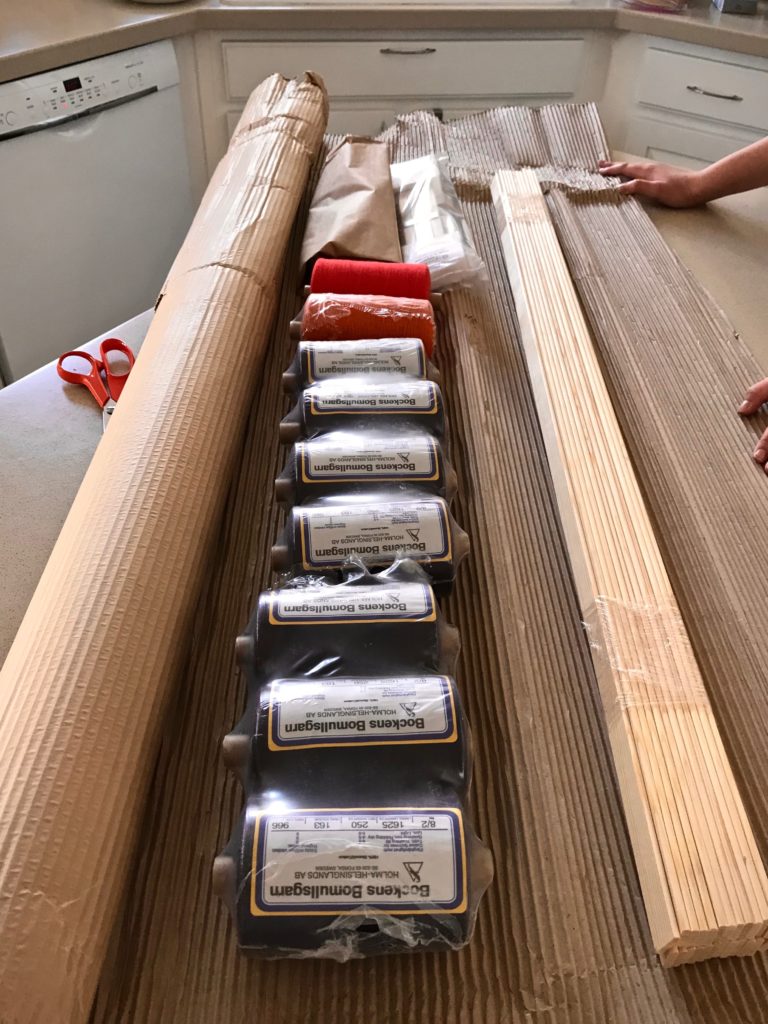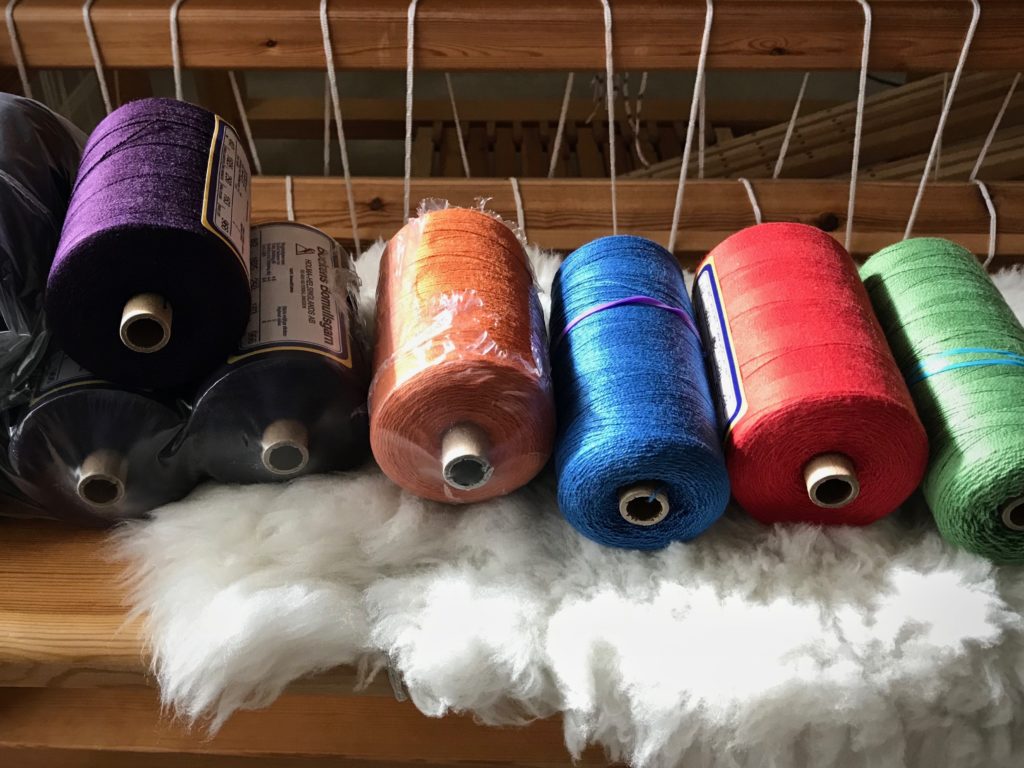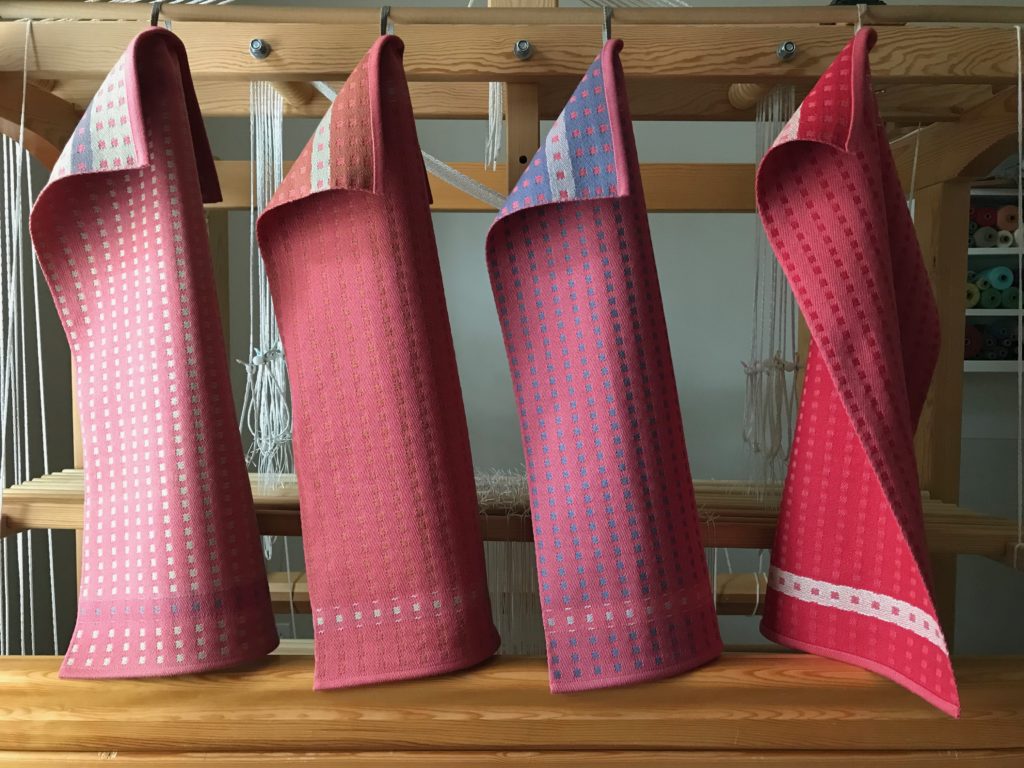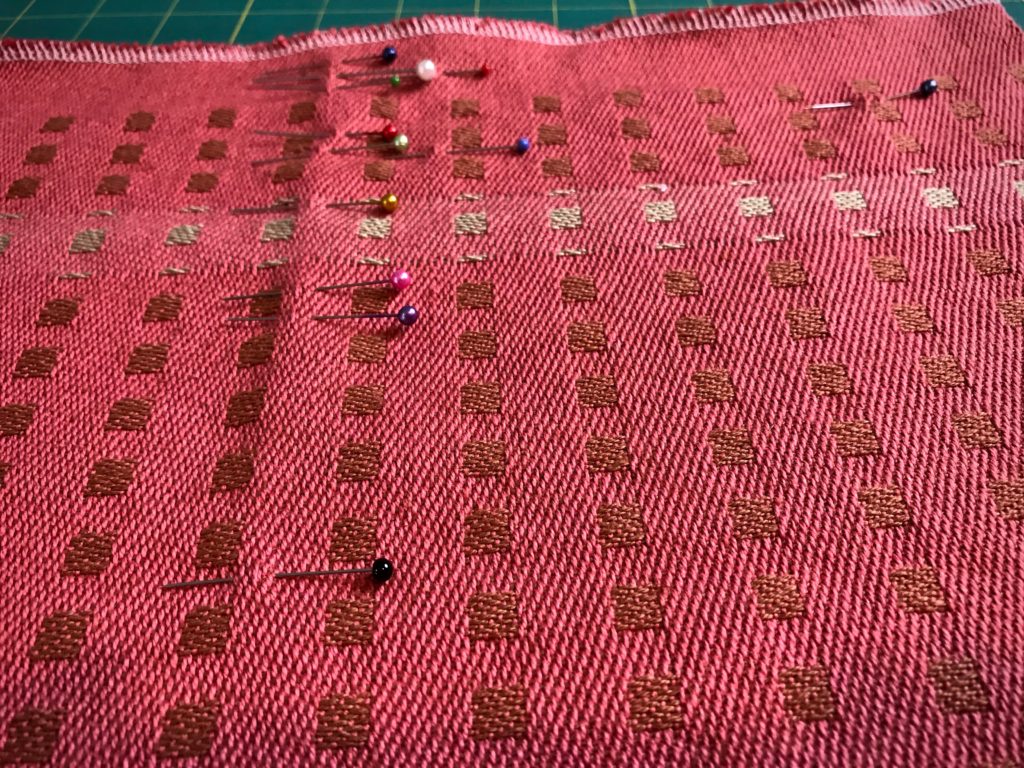I can see the end of the warp! Finishing is in sight. And then, my daughter phones, “Mom! I’m headed to the hospital. This baby is ready!” Weaving suddenly becomes far less important… That was two weeks ago, and little Ari was born. Now, back at the loom, I’ll cross the finish line on this linen upholstery fabric before the day is over.
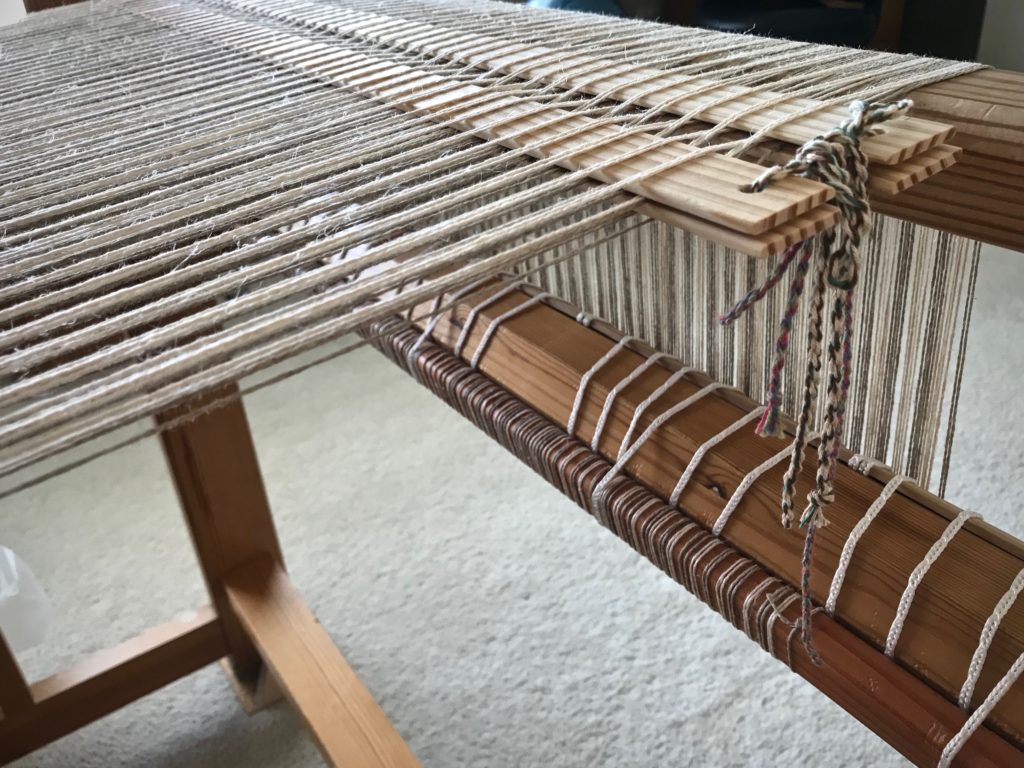
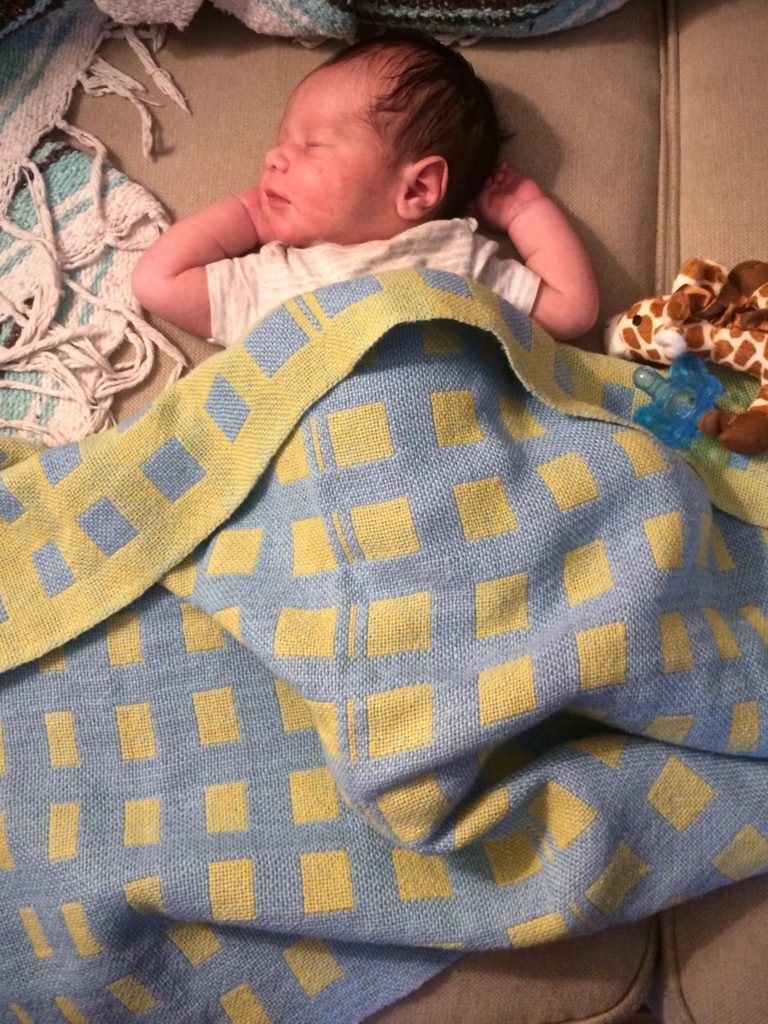
When the back tie-on bar becomes visible, it’s the beginning of the end. And then, the moment the back tie-on bar comes over the back beam I celebrate. It’s the final stretch!
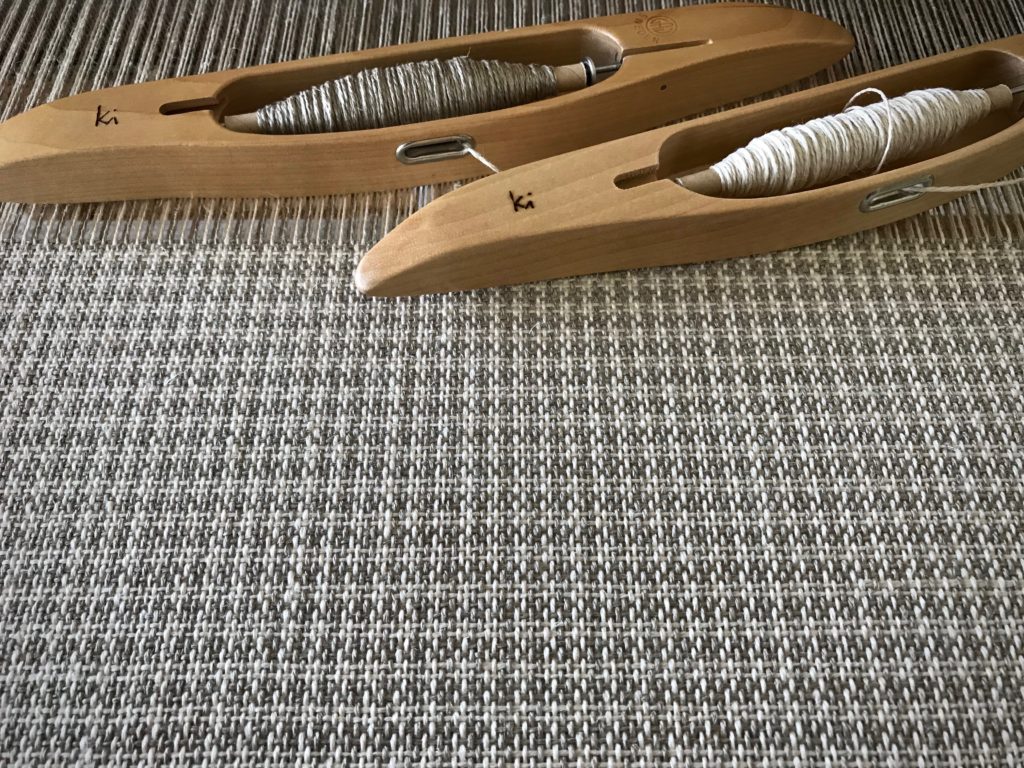
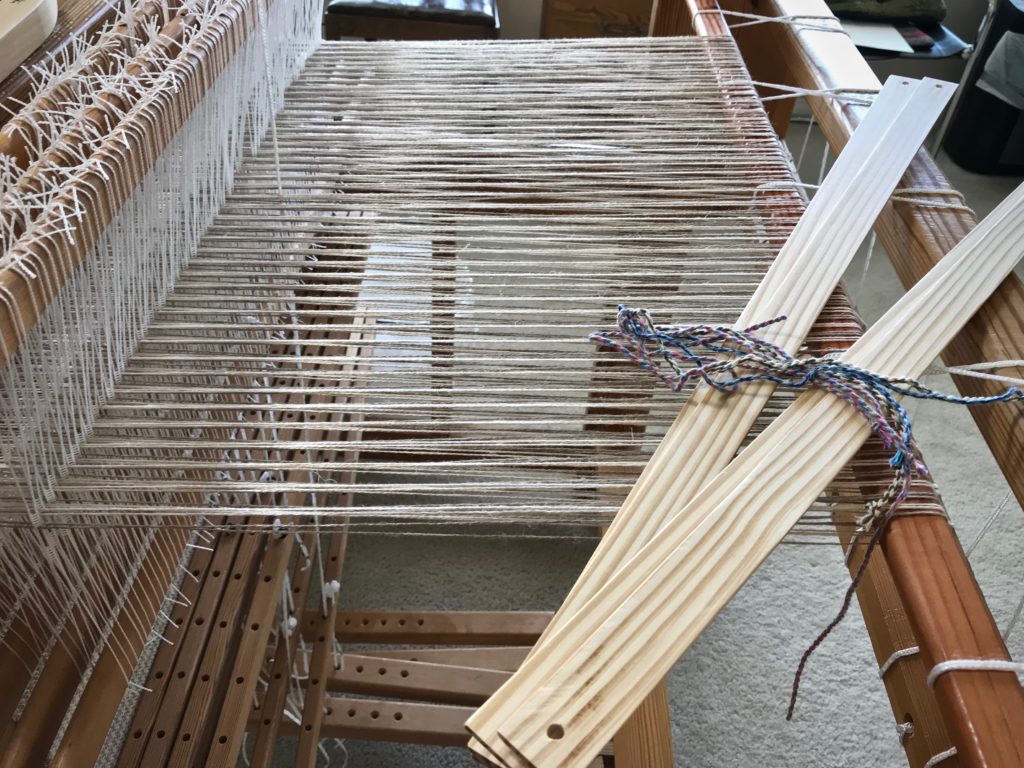
We are participants in a great mystery! Christ in us. For those unfamiliar with the tools and methods of handweaving, it’s a mystery how threads can become cloth. But the handweaver knows. The great mystery of God is that Christ may dwell in us. For those who receive him, the peace of Christ rules within. His presence is woven in.
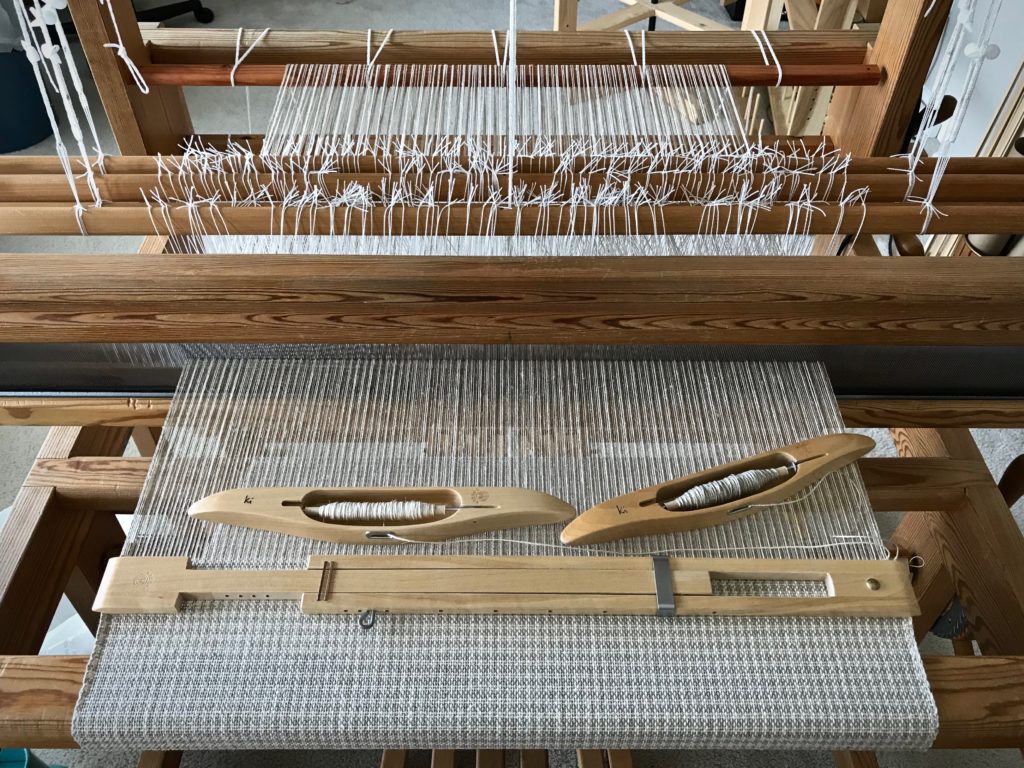
The anticipation of finished cloth is nothing in relation to the anticipation of a new baby in the family. Imagine the anticipation of our holy Father to see the glorious threads of Christ woven in us.
May you participate in the mystery.
Happy weaving,
Karen

